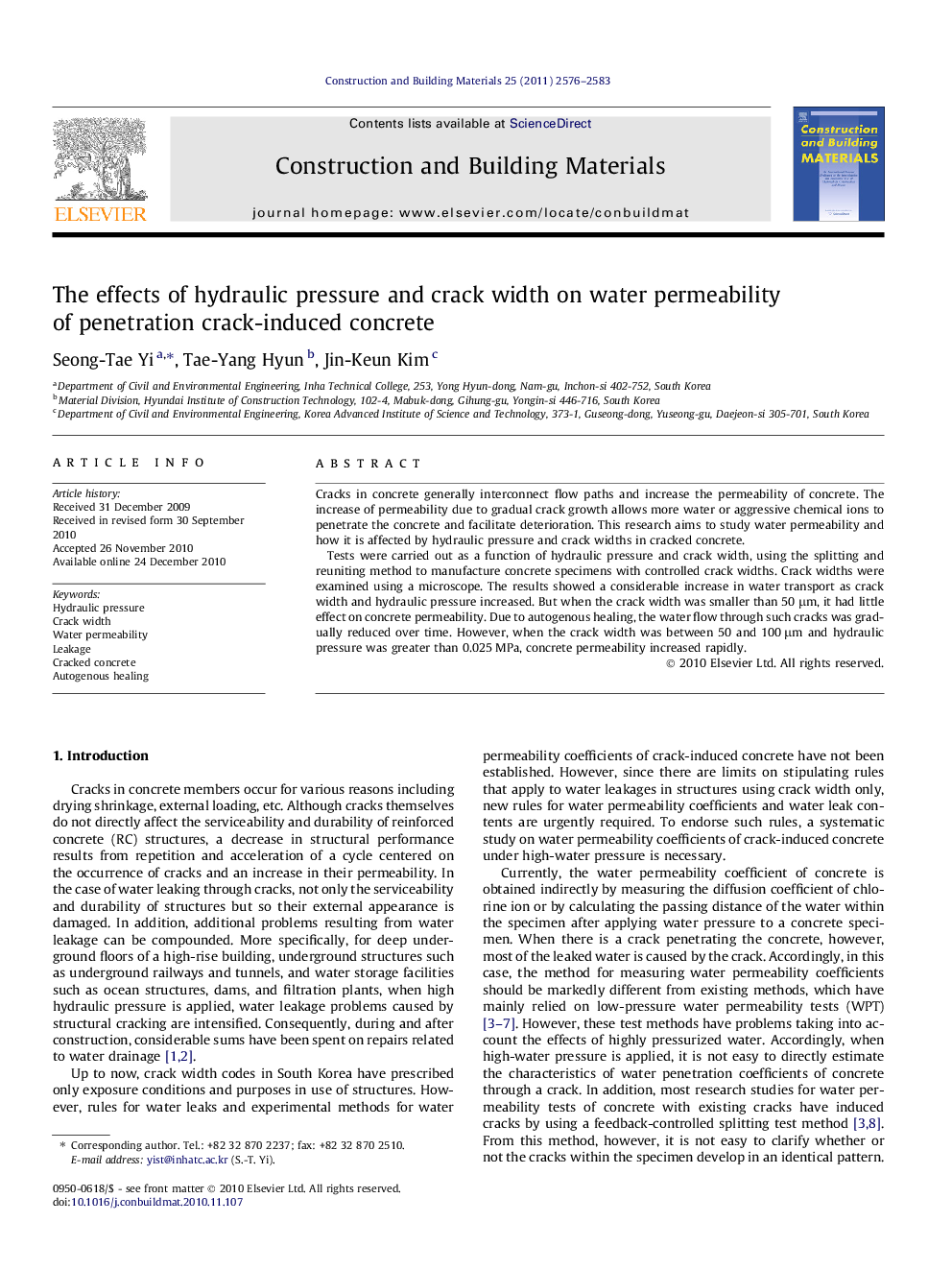| Article ID | Journal | Published Year | Pages | File Type |
|---|---|---|---|---|
| 259298 | Construction and Building Materials | 2011 | 8 Pages |
Cracks in concrete generally interconnect flow paths and increase the permeability of concrete. The increase of permeability due to gradual crack growth allows more water or aggressive chemical ions to penetrate the concrete and facilitate deterioration. This research aims to study water permeability and how it is affected by hydraulic pressure and crack widths in cracked concrete.Tests were carried out as a function of hydraulic pressure and crack width, using the splitting and reuniting method to manufacture concrete specimens with controlled crack widths. Crack widths were examined using a microscope. The results showed a considerable increase in water transport as crack width and hydraulic pressure increased. But when the crack width was smaller than 50 μm, it had little effect on concrete permeability. Due to autogenous healing, the water flow through such cracks was gradually reduced over time. However, when the crack width was between 50 and 100 μm and hydraulic pressure was greater than 0.025 MPa, concrete permeability increased rapidly.
Graphical abstractWater pressure control system.Figure optionsDownload full-size imageDownload as PowerPoint slideResearch highlights► The effects of hydraulic pressure and crack width on water permeability. ► Penetration crack-induced concrete. ► Rapid increase (190 times) of Ke values for increase of pressure from 0.01 MPa to 0.025 MPa and crack width of 100 μm. ► Suggestion of a method applied only a pure tensile force to the specimen utilizing a wedge.
